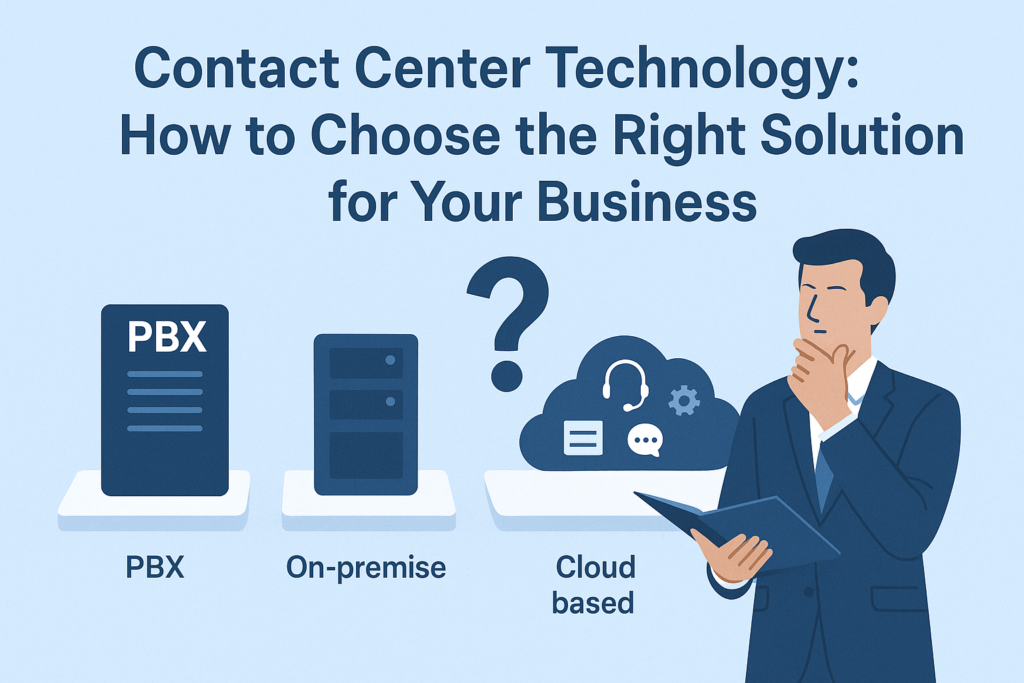The right contact center technology is a business decision that affects revenue, efficiency, and brand trust. The right platform helps agents do their jobs faster. It cuts costs and speeds up growth. But the market has many options. Some platforms are cloud-first. Some sit on your servers. Some focus on messaging and social channels. That can make the choice feel hard. This guide breaks the process into clear steps.
Determine Your Company’s Objectives
Before selecting a contact center technology platform, start with your business goals. When the goals are clear, it becomes easier to find the right fit. Some companies aim to reduce operational costs by making agents more efficient. Others look to improve first-contact resolution (FCR), where issues are solved the first time. This not only saves effort but also builds trust with customers.
You may also need to deliver a seamless omni-channel customer experience. Clients often switch between calls, chat, and email, and they expect the conversation to flow without repeating details. If your business is growing, scale quickly with business growth. The platform should let you add agents and features fast without extra costs or delays. And finally, always look to enhance compliance and security. Protecting customer data protects your business and the trust that comes with it.
Key Features of Contact Center Technology
The best platform gives the tools you actually need. Here is how to evaluate the key features of contact center technology-
- Omni-channel Support: Agents get the full history at once of all previous interactions, like chat, email, social, WhatsApp, and SMS.
- Intelligent Routing: All interactions get routed to the agents who can handle the query in the best possible, quickest, and efficient way. This reduces transfers and ensures customer satisfaction.
- Automation and Smart Assistants: It helps agents to focus on more complex tasks, as it works on repetitive tasks by using virtual assistants, chatbots, and voice bots.
- Real-time Analytics & Reporting: Monitor AHT, CSAT, and SLA adherence. Live dashboards help managers act fast.
- Security & Compliance: Verify compliance with GDPR, HIPAA, PCI-DSS, or local regulations. Encryption, masking, role-based access and audit logs are essential.
What is the Suitable Deployment Model?
Every business has different needs. Some focus on speed and flexibility, while others prioritize security and control. The right deployment model depends on striking that balance.
- Cloud-Based Contact Center: Hosted on a public cloud as a service, this model is fast to set up and easy to scale. It reduces upfront costs and provides teams with access from anywhere.
- Hybrid Contact Center: A mix of both worlds. Telephony stays local at each site, while contact center software runs on a public or private cloud. This model offers flexibility while ensuring sensitive data stays secure.
- On-Premises Contact Center: Everything telephony and contact center solutions run within your premises. It gives complete control and ownership, but requires higher investment and ongoing management.
What are the Integration Capabilities?
A contact center works best when it connects with the tools that you already use. Our solution integrates easily with popular CRMs like Zoho and Salesforce. Agents can have faster and more personal conversations. It also works with helpdesk platforms like Zendesk and Freshdesk. Tickets can be managed in one place, so agents don’t waste time switching screens, and errors go down.
Social media is part of the mix, too. We connect with channels like Facebook, WhatsApp, and Twitter. Your team can manage all customer interactions from one interface, keeping conversations seamless across platforms. And with business intelligence tools, your contact data feeds into dashboards and reports. Leaders can track trends, forecast demand, and make smarter decisions in real time.
Examine Future-readiness and Scalability
Pick a contact center technology platform that grows with your business. Confirm support for remote and hybrid agents. Make sure it can add channels like video chat or new messaging apps. A future-ready software platform helps in efficiency and saves money in the long run.
Conclusion
The right system means being one step closer to your goal. The right call center software provider helps in deployment and integrations. With technology partners like Teckinfo, you gain a trusted provider to deliver a solution built for long-term growth.

